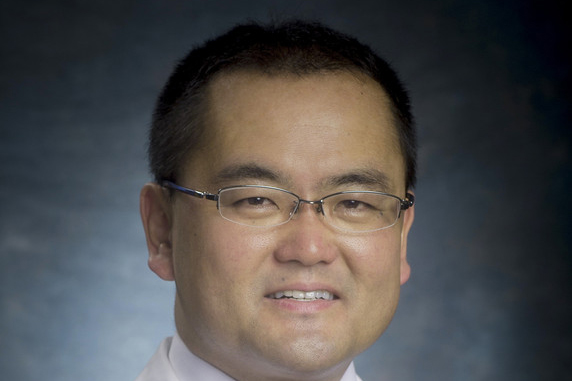
 Ichiro Nakano, M.D., Ph.D., professor in the Department of Neurosurgery, is the latest winner of the School of Medicine’s Featured Discovery. This initiative celebrates important research from School of Medicine faculty members. Dr. Nakano and colleagues discovered that apoptotic cell-derived extracellular vesicles promote malignancy of glioblastoma via intercellular transfer of splicing factors. This knowledge, published in Cancer Cell, identifies a possible target for new therapies to treat glioblastoma, a primary brain cancer, and the mechanism may apply to other cancer types as well. Read more from UAB News here.
Ichiro Nakano, M.D., Ph.D., professor in the Department of Neurosurgery, is the latest winner of the School of Medicine’s Featured Discovery. This initiative celebrates important research from School of Medicine faculty members. Dr. Nakano and colleagues discovered that apoptotic cell-derived extracellular vesicles promote malignancy of glioblastoma via intercellular transfer of splicing factors. This knowledge, published in Cancer Cell, identifies a possible target for new therapies to treat glioblastoma, a primary brain cancer, and the mechanism may apply to other cancer types as well. Read more from UAB News here.
The School of Medicine communications staff sat down with Dr. Nakano to gain insights about his research, UAB and the science community.
Q: What compelled you to pursue this research?
Many of my patients suffer from the devastating disease of glioblastoma. What is most challenging for them is that they see lots of heart-breaking pieces of information on the internet that say patients with glioblastoma only have months to live. I would not only provide surgical care for the patients, but also bring hope for the future with new therapies that could be applied to my patients. That is why my lab works on therapy development for glioblatoma.
Q: What was your most unexpected finding?
The most surprising finding was that the current therapies effectively kill many tumor cells while these dying tumor cells send new signals to remaining surviving tumor cells to provoke them to become "angry" and turn on some therapy resistance signals. This means just inducing tumor cells to die is not the end of the game.
Q: What is your research’s relevance to human disease?
Our data suggests that we need to develop combined therapies from the existing ones to eliminate the crosstalk between post-therapy dying tumor cells and surviving ones. It is likely applicable to other cancers beyond brain tumors in order to achieve better patient outcomes.
Q: When did you know you had an important discovery?
I knew when the first author, Marat, brought me the data from the unbiased analysis. The data was so clear that the intercellular signals from dying tumor cells contain novel messages to surviving tumor cells to gain therapy resistance. It was similar to a mechanism known as tissue repair. When I saw the data for the first time, I instantly thought about the idea that "brain cancers are trying to repair themselves after therapeutic insult."
Q: How has being at UAB and living in Birmingham affected your research?
The collegial environment at UAB led us to identify this discovery. The collaboration within the Neuro-Oncology Program in the Cancer Center is outstanding. The interaction between physicians and scientists takes place on a daily basis, which is extremely rare in any other places I have worked/visited. Obviously every place has opportunity to further improve, but it is fair to say from my standpoint, that the opportunity to work at UAB enables us to make visible impact on cancer therapy development in the near future